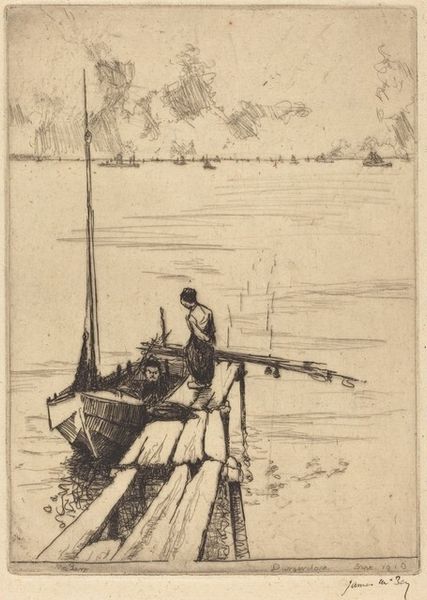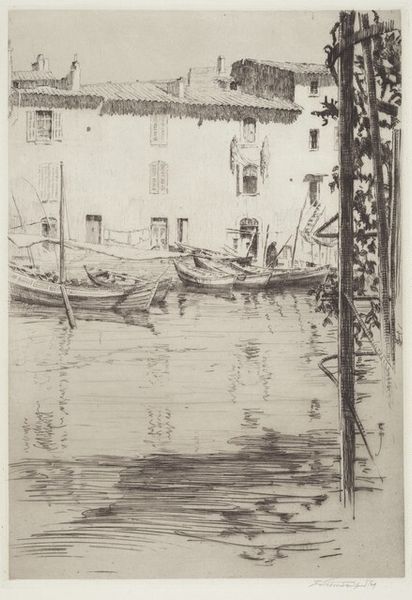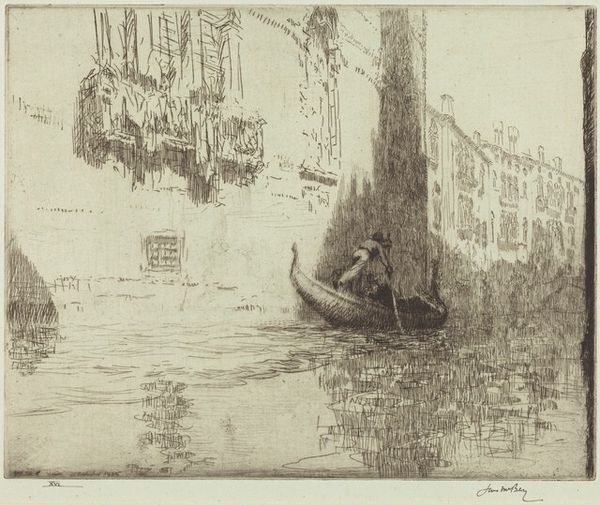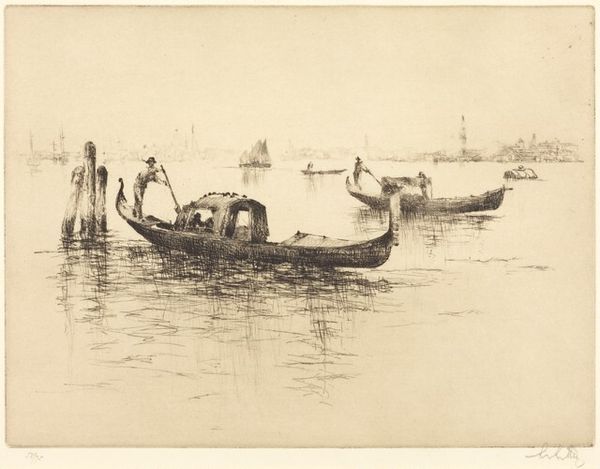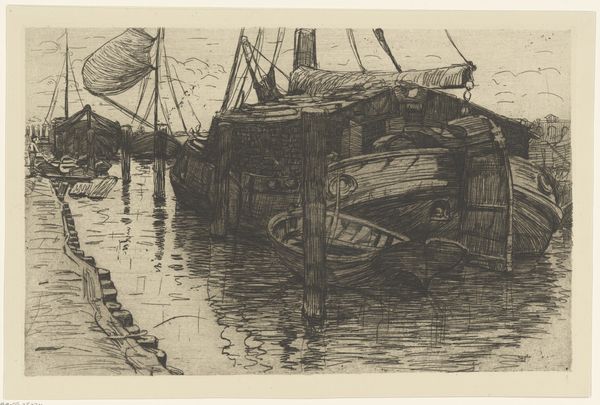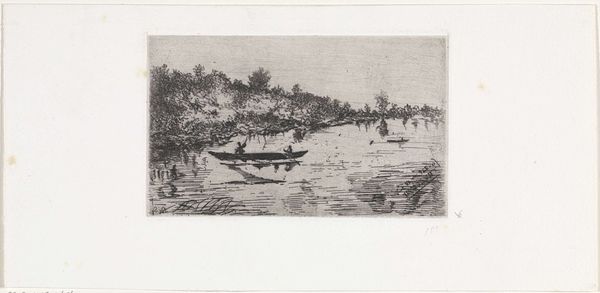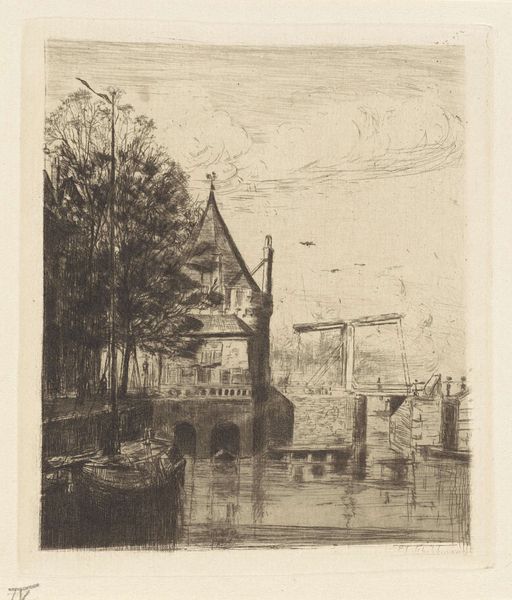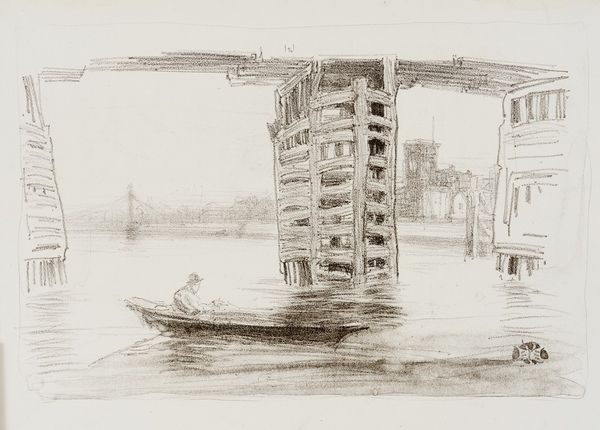
drawing, print, etching, paper
#
drawing
#
venetian-painting
# print
#
etching
#
landscape
#
paper
#
cityscape
#
realism
Copyright: National Gallery of Art: CC0 1.0
Curator: This delicate etching, titled "Palazzo Vendramin, Venice," offers us a glimpse into Venetian life. Emilio Mazzoni-Zarini's creation is printed on paper and captures a slice of the iconic city. Editor: Immediately, the stillness strikes me. There's a quiet melancholy conveyed in the monochrome tones. Even with the ripples in the water, the whole scene feels suspended, dreamlike. Curator: That dreamlike quality may stem from the artist's choice to render the scene primarily in grays, focusing on texture and light. It speaks to a Venetian painting style concerned with atmosphere. Think about Canaletto. The print medium itself contributes; the etching process allows for fine, detailed lines, giving depth to a rather limited palette. Editor: The figures certainly seem posed and frozen rather than caught mid-action. Look at the lone woman on the small bridge, almost like a statue observing from above. And, the gondola, laden and low in the water – is it coming or going? It gives a very deliberate, constructed feel to the scene. This makes one wonder what message the artist wants to communicate. Curator: Indeed. I think the realism captures a kind of working-class Venice, a far cry from the romantic imagery usually associated with the city. The Palazzo looms in the background, a reminder of power, while the figures in the boat are caught in their everyday toils. Symbolically, the palazzo is meant to embody strength and resilience; it is as old as it is opulent, whereas, by contrast, the boat, with its slightly weary traveler, captures the everyday worker. Editor: A visual record of social stratification then, not unusual for this period when social realism was coming to the forefront. The positioning of the figures in relation to the building tells us a lot about the politics of space in the city at the time. This wasn't just a pretty picture; it was a commentary on Venetian society. Curator: Yes. I think considering it through that lens unlocks new insights. The weight of history becomes palpable. Editor: Ultimately, Mazzoni-Zarini’s vision gives a glimpse into the city's visual politics and its ability to capture transient realities in material art. Curator: A wonderful reminder that images, even quiet ones, carry social and political stories for those willing to listen.
Comments
No comments
Be the first to comment and join the conversation on the ultimate creative platform.

